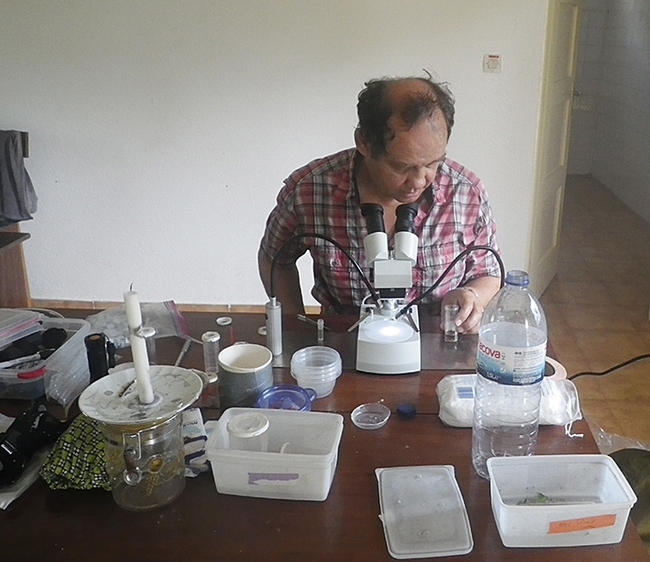- Author: Kathy Keatley Garvey
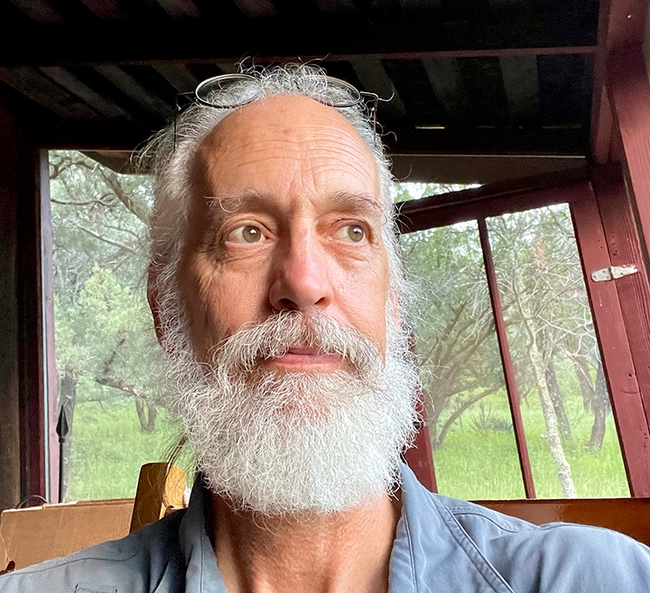
“These weather-related catastrophes can cause local extinctions and disrupt ecological interactions,” wrote Carroll and three Texas collaborators in a newly published article in the journal, Nature Ecology and Evolution, “Spatial Sorting Promotes Rapid (mal) Adaptation in the Red-Shouldered Soapberry Bug after Hurricane-Driven Local Extinctions.”
“Such disruptions,” they related, “are expected to become more impactful and frequent in the near future and, consequently, so will the associated regularity of localized extinction and post-disturbance recovery.”
The research team, including Carroll and Mattheau Comerford, Scott Egan and Tatum La of the Department of BioSciences, Rice University, Houston, studied the changes the soapberry bugs went through after “catastrophic flooding in an extreme hurricane” in southeastern Texas.
They found that “long-winged dispersal forms of the soapberry bug, Jadera haematoloma, accumulated in recolonized habitats and due to genetic correlation, mouthparts also became longer and this shift persisted across generations.”
“Those longer mouthparts were probably adaptive on one host plant species but maladaptive on two others based on matching the optimum depth of seeds within their host fruits due to genetic correlation,” they wrote.
Hurricane Harvey, a Category 4 hurricane that made landfall in Texas and Louisiana in August 2017, is known as one of the worst tropical cyclones to hit the United States, resulting in more than 100 deaths and displacing more than 30,000 people. “In a four-day period, many areas received more than 40 inches (1,000 mm) of rain as the system slowly meandered over eastern Texas and adjacent waters, causing unprecedented flooding,” according to Wikipedia.
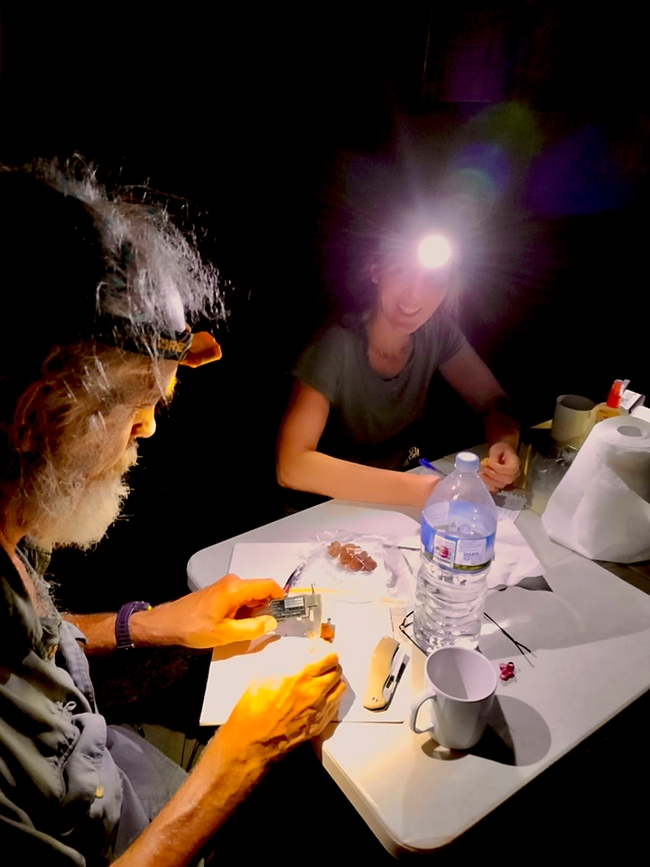
Carroll, who holds a doctorate in biology from the University of Utah, explores contemporary evolution “to better understand adaptive processes and how those processes can be harnessed to develop solutions to evolutionary challenges in food production, medical care and environmental conservation.” He is a research associate in the Department of Entomology and Nematology and the president of the Carroll-Loye Biological Research.“
"Recent work on the biology of invasive species has highlighted ‘spatial sorting' as an underappreciated evolutionary mechanism that relies on dispersal and, thus, promotes rapid evolution across space,” the team wrote.
The authors defined spatial sorting as “a process of dispersing organisms that generates non-random shifts in local phenotype frequencies, such that good dispersers are the first to arrive at the leading edge of invasions or in recolonized habitats. This leads to assortative mating, as only other strong dispersers are present during the time of colonization. For instance, in the current study, mate options at recolonized flooded sites were initially limited to macropterous individuals as wing form during colonization was 100% biased by the ability to fly. Spatial sorting could then be self-reinforcing, as offspring of colonizing individuals are expected to show similar or stronger dispersal phenotypes, along with a higher frequency of genetically correlated traits not associated with dispersal.”
“Soapberry bugs are well-known examples of rapid adaptive evolution in response to Anthropocene environments, where populations on native host species have shifted and adapted to feed on introduced, non-native plants in the same family over the past 60 years,” the authors wrote.
Soapberry Beaks. Soapberry bugs pierce seed pods with needle-like mouthparts, commonly referred to as “beaks.” “The range of mouthpart lengths in nature strongly reflects fruit size of the host plant on which each population feeds and these host-associated differences in beak length evolved through divergent natural selection between hosts,” the authors wrote. “When beak length matches the distance between outer fruit wall and the interior seeds, it increases seed access and decreases handling time, leading to higher fecundity in females. Beak length is a polygenic trait influenced by epistatic and dominance interactions and is highly heritable.”
The study involved three soapberry bug host plant species in the southeastern Texas study area: (1) native balloon vine (Cardiospermum halicacabum), with large inflated seed pods hosting soapberry bugs with the longest beak lengths; (2) native western soapberry tree (Sapindus saponaria var. drummondii, with intermediate-sized seed pods hosting soapberry bugs with intermediate-sized beak lengths; and (3) non-native goldenrain tree (Koelreuteria elegans) with comparatively flat capsules that permit ready access to the seeds.
The authors wrote that Hurricane Harvey “was locally catastrophic for the flooded soapberry bug study populations, with populations at 11 of the 15 monitored sites going locally extinct and remaining so for at least 4.5 months and seven additional populations never returning over the 3 years post-hurricane.” All of the drowned bugs were balloon vine associates; the pods are water dispersed; and many of the sites were deeply inundated. Yet those vines are the most regular seed providers in safe times, and favor the quick developing flightless bugs in consequence. Those individuals had little chance of escape.
Adjoining Viewpoint. In an adjoining viewpoint, titled “Spatial Sorting Creates Winners and Losers,” evolutionary ecologists Swanne Gordon and Caleb Axelrod of Cornell University's Department of Ecology and Evolution, said the research provides “evidence of the role of spatial sorting in recolonization by soapberry bugs after a catastrophic event.”
“We are currently experiencing a concerning increase in catastrophic environmental disturbances on Earth, which presents a pressing challenge for both ecological systems and human societies,” Gordon-Axelrod wrote. “These disturbances--encompassing events such as hurricanes, wildfires and droughts--can have marked short-term and long-term impacts on ecosystems.”
Comerford, Carroll and Egan conceived the focus of the paper; Comerford and La performed the data collection; and Comerford and Egan shared writing responsibilities with feedback from Carroll and La.
The project drew financial support from grants from the American Museum of Natural History, American Philosophical Society, Society for the Study of Evolution for dissertation support to Comerford, and the National Science Foundation to Egan and Carroll.
All data collected for this project are freely available in the digital repository Dryad: https://doi.org/10.5061/dryad.tht76hf4t.
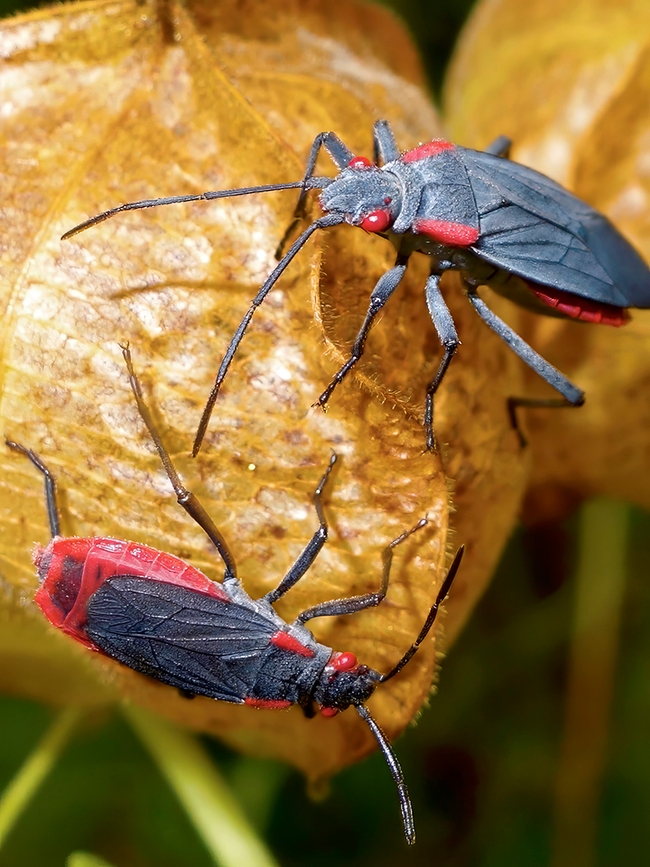
- Author: Kathy Keatley Garvey
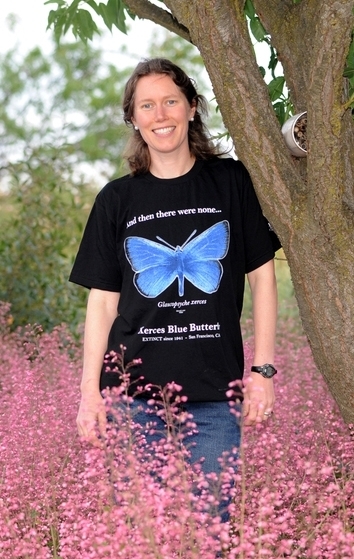
It will take place Saturday, Feb. 10 on the UC Davis campus.
Participating collections include, but are not limited to, the Phaff Yeast Culture Collection, Bohart Museum of Entomology, Museum of Wildlife and Fish Biology, Arboretum and Public Garden, California Raptor Center, Earth and Planetary Sciences Paleontology Collections, Botanical Conservatory, Center for Plant Diversity, Nematode Collections, Marine Invertebrate Teaching Collection. and Department of Anthropology Museum.
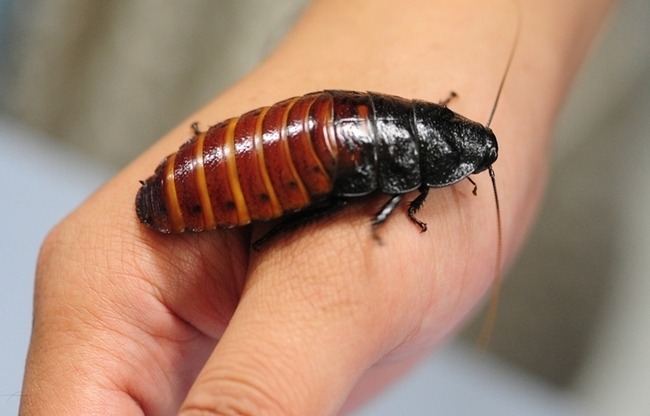
Donations, from $5 on up, may be made at this website: UC Davis October Crowdfund campaign. It costs approximately $5000 to finance the Biodiversity Museum Day, the committee related. Donors may make contributions to honor a loved one or a favorite organism, such as a praying mantis, plant, nematode or fossil. The crowdfunding campaign ends at 11:59 p.m.,Tuesday, Oct. 31.
The committee asks that you:
- Share the news with three friends/co-workers
- Post on your social media. The UC Davis Crowdfund has links for Facebook, LinkedIn and Twitter (or X)
- Donate here
Coordinating the UC Davis October Crowdfund campaign are Yang; Brennen Dyer, collections manager for the Bohart Museum; and Melissa Cruz Hernandez, outreach and leadership program manager for the UC Davis Arboretum and Public Garden.
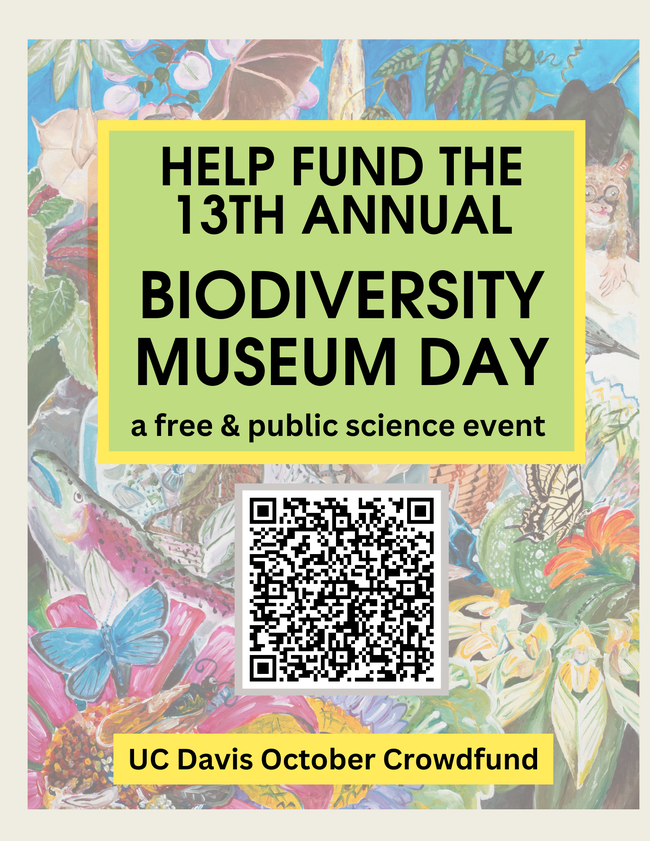
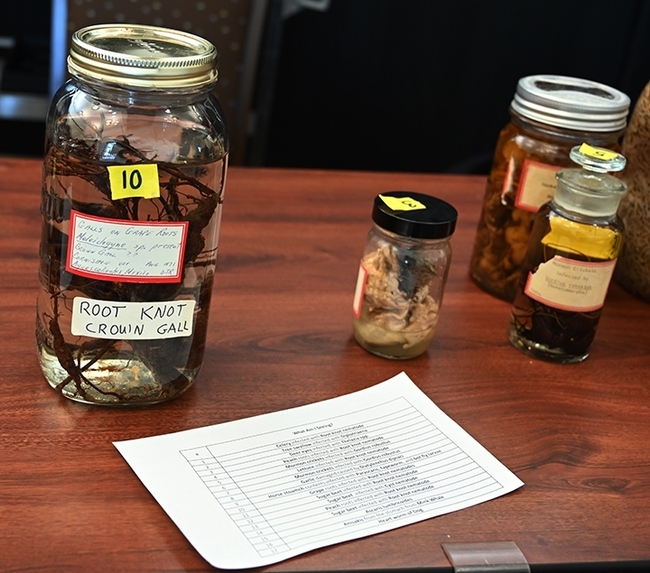
- Author: Kathy Keatley Garvey
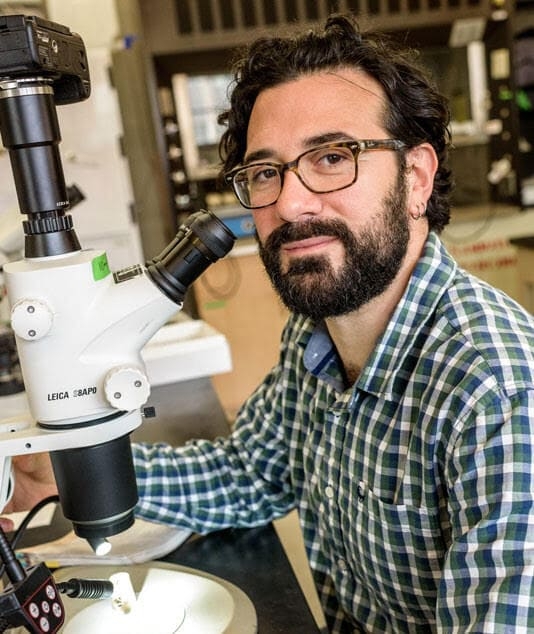
The seminar also will be on Zoom. The link:
https://ucdavis.zoom.us/j/95882 849672
"Pollen provides bees their primary source of protein and lipid macronutrients, essential for development, fitness, and resistance to stress," Vaudo writes in his abstract. "Yet, pollen macronutrient quality differs substantially among host-plant species. And thus, bees may be sensitive to their nutritional needs and differentially forage among host plants to obtain appropriate nutrition. In this presentation, I will highlight my research that has linked bumble bee host plant foraging preferences to pollen nutritional quality and individual and colony health. Using this as a theoretical framework, I will present recent research where I show that floral pollen nutritional quality can help explain the structure and patterns of bee-wildflower community interactions among diverse populations; and how this research can inform conservation practices. Finally, I will discuss how the quality of pollen that bees collect may differ between and remain consistent within species populations and help explain their history of floral preferences."
Said host and pollination ecologist Neal Williams, professor, UC Davis Department of Entomology and Nematology: "His work examines nutritional ecology and diet choice in bumble bees. Anthony has been a pioneer in translating macronutrient composition of pollen to foraging choices by bumblebees in controlled experiments to whole landscape contexts."
Vaudo, whose career deals with pollinator ecology and habitat restoration, joined the U.S. Forest Service in January 2023 after serving as a postdoctoral researcher at the University of Nevada, Reno for four years.
He holds a bachelor of science degree in psychology (2003) from the University of Florida but then switched to entomology. He obtained his master of science degree in entomology from the University of Florida in 2010 and his doctorate in entomology from Pennsylvania State University in 2016. He was advised by Professors Christina Grozinger and John Tooke. Vaudo then served as a postdoctoral scholar at Penn State.
He was awarded a Fulbright postdoctoral scholarship in January 2018, researching "bee-flower interaction networks across different biomes in South Africa."
Seminar coordinator is Brian Johnson, associate professor, UC Davis Department of Entomology and Nematology. For Zoom technical issues, he may be reached at brnjohnson@ucdavis.edu. The list of seminars is posted here.
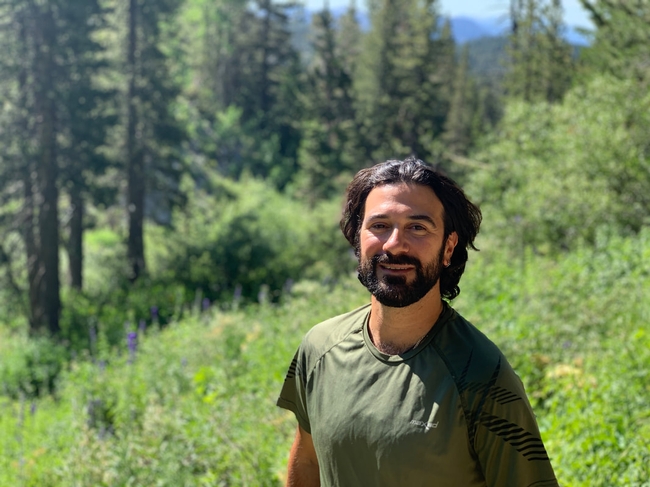
- Author: Kathy Keatley Garvey
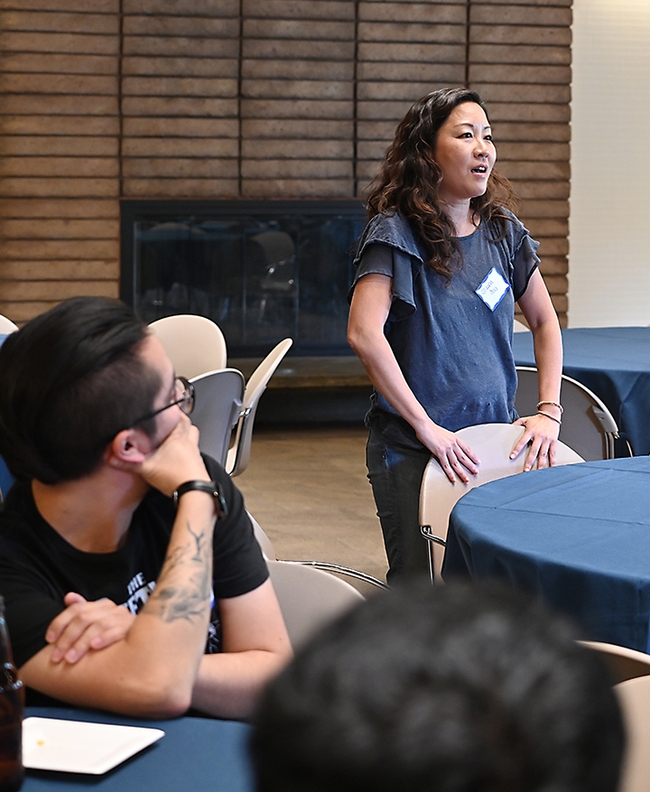
The fall social, billed as "a place to unwind and indulge," featured a light buffet and beverages.
Professor Chui, a molecular geneticist-physiologist and the outgoing vice chair, is serving a five-year term as chair, effective July 1, 2023. She succeeds nematologist and professor Steve Nadler, who had chaired the department since Jan. 1, 2016.
Chiu thanked Nadler for his exceptional service. "Steve has been an exceptional leader for our department through some very challenging times. He has been fair-minded, compassionate, and has led the department with poise and a clear vision. He has been a great mentor for me personally, and I am positive that the many lessons I have learned from him will come in very handy as I serve as chair. I am very grateful for all the support from the faculty, staff, and students in the department, and most of all, to faculty colleagues who have been stepping up to serve on key positions in department and graduate group committees during this transition. I cannot thank them enough."
Said Nadler: "I'm very pleased that we have a new group of leaders guiding the department as we move forward. I'm confident that Joanna (Chui), Rachel (Vannette) and Louie (Yang) will respond to whatever challenges are ahead."
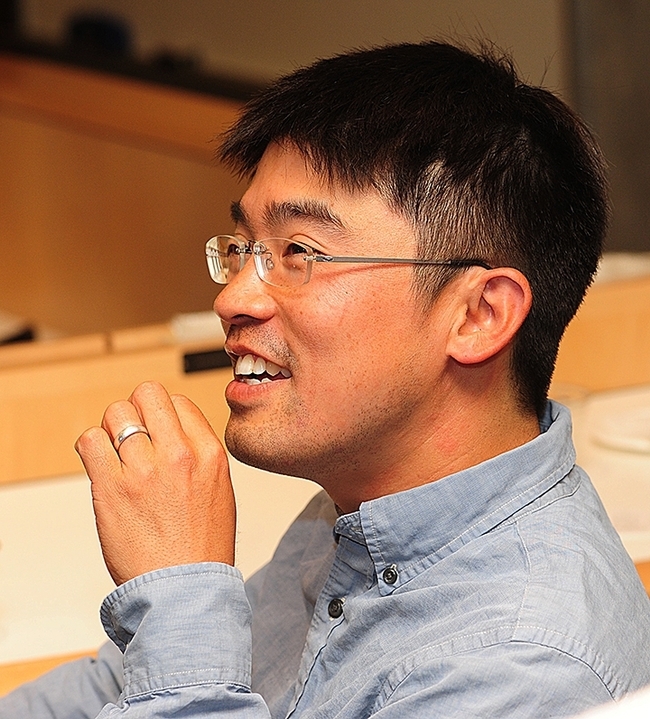
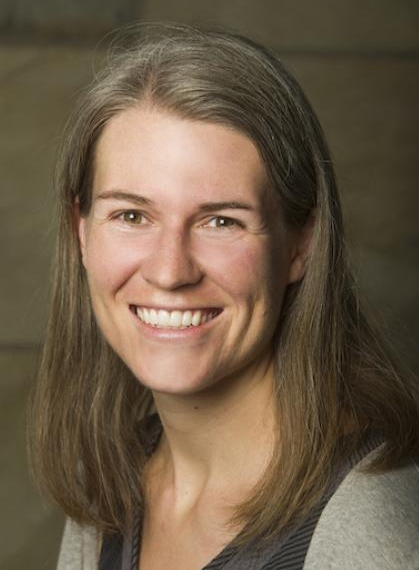
The department is ranked as one of the top entomology departments in the United States. In November 2007, the Chronicle of Higher Education ranked it No. 1 in the country. (See news story)
Chiu joined the Department of Entomology and Nematology in 2010 as an assistant professor, and advanced to associate professor and vice chair in 2016, and to professor and vice chair in 2021. She was named one of 10 UC Davis Chancellor's Fellows in 2019, a five-year honor awarded to associate professors who excel in research and teaching. The UC Davis Academic Senate honored her with a Distinguished Teaching Award, Graduate/Professional category, in 2022. She most recently received the Chancellor's Award for Excellence in Mentoring Undergraduate Research.
Chiu co-founded and co-directs (with professors Jay Rosenheim and Louie Yang) the campuswide Research Scholars Program in Insect Biology, launched in 2011 to provide undergraduates with a closely mentored research experience in biology. The program's goal is to provide academically strong and highly motivated undergraduates with a multi-year research experience that cultivates skills that will prepare them for a career in biological research.
Nadler began his five-year term as chair on Jan. 1, 2016, succeeding Michael Parrella, who accepted a position as the dean of the College of Agricultural and Life Sciences, University of Idaho, effective Feb. 1, 2016.
Nadler joined the UC Davis faculty in 1996 as an associate professor and associate nematologist, advancing to professor in 2001. He was named chair of the Department of Nematology in May 2005 and held that leadership position until June 2011. Active in the American Society of Parasitologists, Nadler served as the organization's president from 2007 to 2008. (See news story)
The two departments merged in 2011, but the department was not officially renamed the Department of Entomology and Nematology, until May 28, 2013. The department today has some 25 faculty.
The UC Davis Department of Entomology began as an offshoot of the Department of Entomology and Parasitology at UC Berkeley and the two were closely entwined for more than 50 years before the UC Davis Department of Entomology became autonomous on July 1, 1963.
UC Davis offered a two-year non-degree program in entomology, beginning in 1913. The first degree in entomology provided at UC Davis was in 1923-24 at which time Stanley B. Freeborn (for whom Freeborn Hall is named) was transferred from UC Berkeley to UC Davis to head the program.
Resources: History
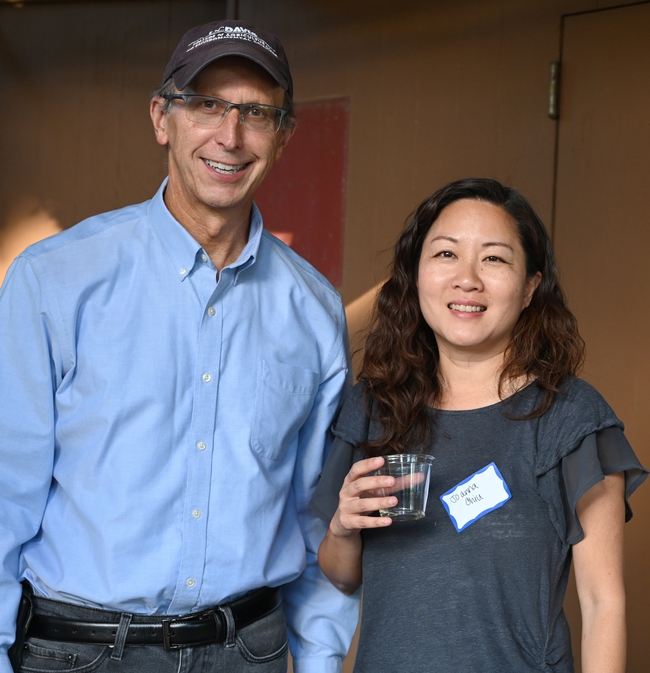
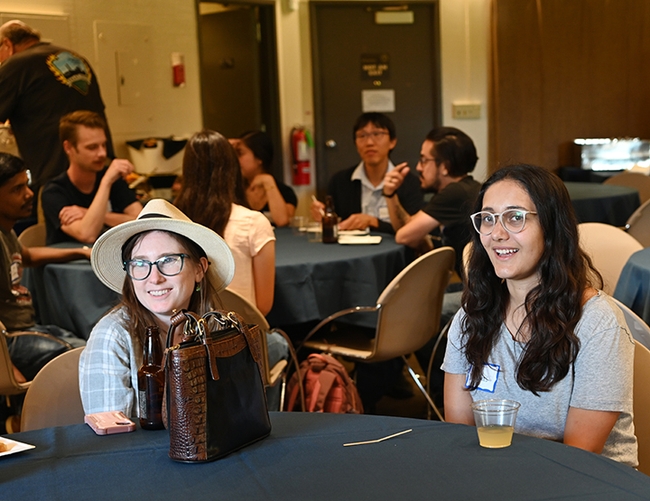
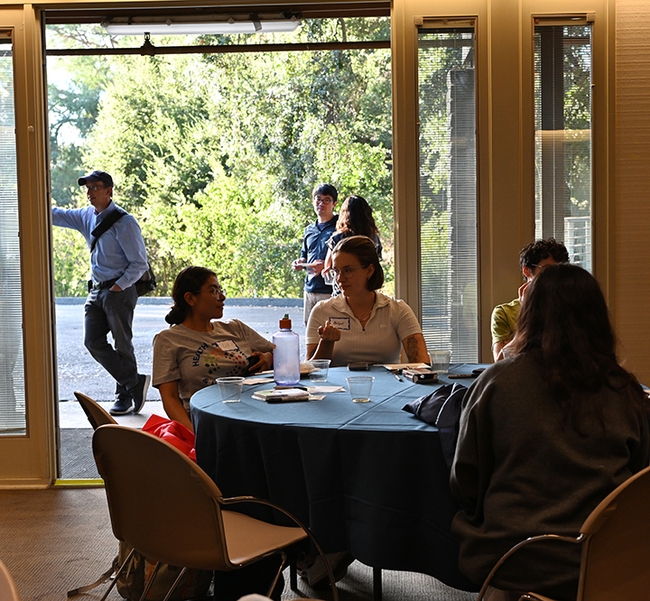
- Author: Kathy Keatley Garvey
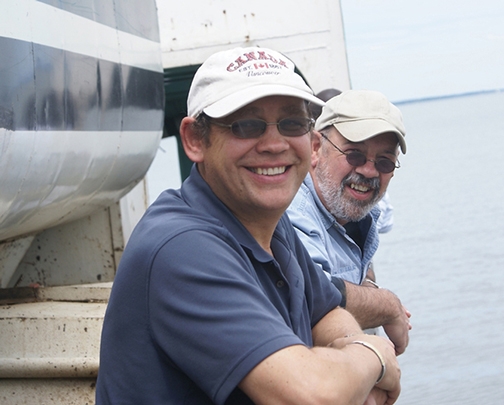
"Can Genetically Modified Mosquitoes End Disease?" spotlights the work of Gregory Lanzaro, director of the UC Davis Vector Genetics Laboratory, and a professor in the School of Veterinary Medicine's Department of Pathology, Microbiology and Immunology, and his "blood brother," longtime fellow mosquito researcher Anthony "Anton" Cornel, a member of the UC Davis Department of Entomology and Nematology (ENT) faculty, director of the UC Mosquito Control Research Laboratory, and researcher in the Vector Genetics Laboratory.
The New York Times' feature, written by global health reporter Stephanie Nolen, appears in the Sept. 29 edition.
An earlier news story announcing the $10.2 million grant to the UC Davis Vector Genetics Laboratory, from Open Philanthropy, was posted Jan. 25, 2022 on the UC Davis Department of Entomology and Nematology website. In that story, Lanzaro, former ENT faculty member and former director of the now-folded UC Mosquito Research Program, explained that the research involves "the release of Anopheles mosquitoes engineered to prevent transmission of the malaria parasite Plasmodium falciparum on the islands. We are working in collaboration with the UC Irvine Malaria Initiative, a research consortium including scientists from UC Irvine, San Diego and Berkeley as well as Johns Hopkins University. We are working toward the application of advanced genetic tools aimed at the mosquito vector. It is our belief that this approach, used in conjunction with early malaria treatment and detection, can provide a cost effective, sustainable, and environmentally responsible program to ultimately eliminate malaria from Africa.”
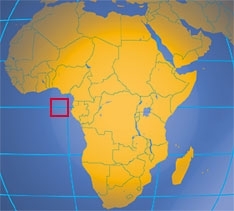
"The malaria situation in São Tomé and Príncipe, an African island nation with a population of 200,000, epitomizes the current challenge in the global struggle against the disease," Nolen wrote. "The country is among the world's least developed, and it has depended on foreign aid to fight malaria. Various campaigns over the past 50 years drove cases down, only to have them resurge worse than ever when the benefactor moved on."
Lanzaro told Nolen that "we've been working on this for 30 years, and from the beginning we said, It has to work, but it also has to be inexpensive, and it has to be sustainable. And we believe we have it...We have got to get going. We can't just keep saying 10 more years, 10 more years. Six million people have died while we've been fiddling around.”
Cornel agrees. In the initial UC Davis news story, he commented: "The fight to reduce and possibly eliminate malaria continues and becomes especially challenging as efforts to reduce malaria morbidity have plateaued since 2015. Therefore, we must seriously consider new tools. One such tool is genetically modifying the major mosquito vector in the Afrotropics so that it cannot transmit malaria. The project aims to use genetically modified mosquito strategy to reduce and eliminate malaria from the Islands of São Tomé and Príncipe, as proof of concept, before using this technology on larger scales on mainland Africa."
The New York Times' story pointed out that "genetic modification is a controversial endeavor. Governments are hesitant, and few in Africa have laws to regulate the use of the technology. Its risks lie in the unknowns: Could the modified mosquito evolve in some way that has harmful effects on the rest of the ecosystem? Could it prompt a dangerous mutation in the malaria parasite, which will find a new way to spread to survive?"
"These fears," Nolen wrote, "are why the University of California team chose São Tomé and Príncipe for its experiment: The island nation is isolated and has limited international traffic. The team has also built in a plan to wipe out the population of its modified mosquitoes if there is a need to end the experiment for any reason."
See the entire news story, Can Genetically Modified Mosquitoes End Disease?
